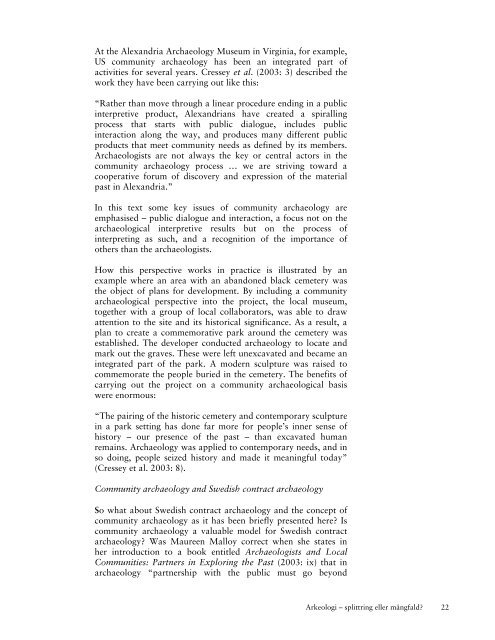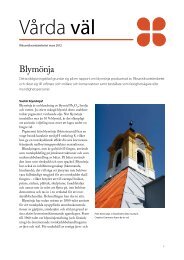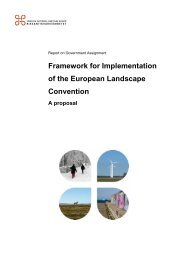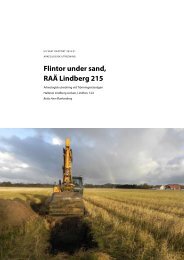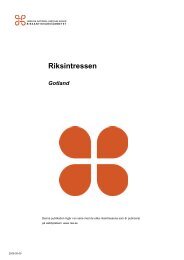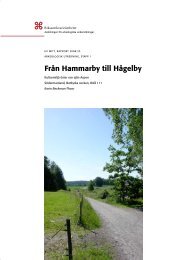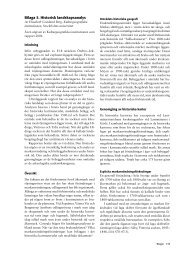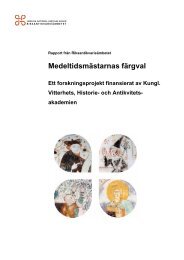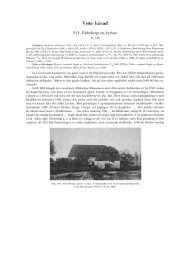Innehåll - Riksantikvarieämbetet
Innehåll - Riksantikvarieämbetet
Innehåll - Riksantikvarieämbetet
You also want an ePaper? Increase the reach of your titles
YUMPU automatically turns print PDFs into web optimized ePapers that Google loves.
At the Alexandria Archaeology Museum in Virginia, for example,<br />
US community archaeology has been an integrated part of<br />
activities for several years. Cressey et al. (2003: 3) described the<br />
work they have been carrying out like this:<br />
“Rather than move through a linear procedure ending in a public<br />
interpretive product, Alexandrians have created a spiralling<br />
process that starts with public dialogue, includes public<br />
interaction along the way, and produces many different public<br />
products that meet community needs as defined by its members.<br />
Archaeologists are not always the key or central actors in the<br />
community archaeology process … we are striving toward a<br />
cooperative forum of discovery and expression of the material<br />
past in Alexandria.”<br />
In this text some key issues of community archaeology are<br />
emphasised – public dialogue and interaction, a focus not on the<br />
archaeological interpretive results but on the process of<br />
interpreting as such, and a recognition of the importance of<br />
others than the archaeologists.<br />
How this perspective works in practice is illustrated by an<br />
example where an area with an abandoned black cemetery was<br />
the object of plans for development. By including a community<br />
archaeological perspective into the project, the local museum,<br />
together with a group of local collaborators, was able to draw<br />
attention to the site and its historical significance. As a result, a<br />
plan to create a commemorative park around the cemetery was<br />
established. The developer conducted archaeology to locate and<br />
mark out the graves. These were left unexcavated and became an<br />
integrated part of the park. A modern sculpture was raised to<br />
commemorate the people buried in the cemetery. The benefits of<br />
carrying out the project on a community archaeological basis<br />
were enormous:<br />
“The pairing of the historic cemetery and contemporary sculpture<br />
in a park setting has done far more for people’s inner sense of<br />
history – our presence of the past – than excavated human<br />
remains. Archaeology was applied to contemporary needs, and in<br />
so doing, people seized history and made it meaningful today”<br />
(Cressey et al. 2003: 8).<br />
Community archaeology and Swedish contract archaeology<br />
So what about Swedish contract archaeology and the concept of<br />
community archaeology as it has been briefly presented here? Is<br />
community archaeology a valuable model for Swedish contract<br />
archaeology? Was Maureen Malloy correct when she states in<br />
her introduction to a book entitled Archaeologists and Local<br />
Communities: Partners in Exploring the Past (2003: ix) that in<br />
archaeology “partnership with the public must go beyond<br />
Arkeologi – splittring eller mångfald? 22


